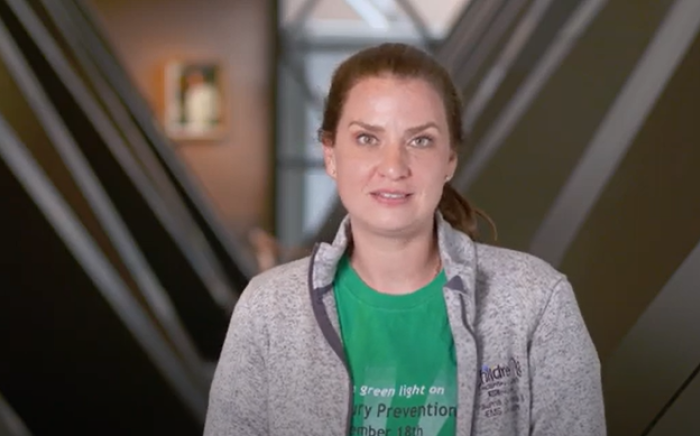Toilet Learning Tips
Patience + Assurance = Toilet Learning
At St. Louis Children's Hospital we know that toilet learning can be a frustrating experience if the process begins too soon and the child feels rushed. Your child must be emotionally and physically ready for the experience.
It is important for you to know that toilet learning as a partnership where the adult takes cues from the child and helps provide the tools and encouragement for the child to learn at an appropriate pace.
When to start?
The key to successful toilet learning is waiting to start until the child has developed sufficient emotional and physical skills. If a potentially disturbing change in routine is in the near future - it may be wise to postpone toilet learning.
When is a child ready?
The physical prerequisites for learning include muscle control and the ability to recognize feeling of a full bladder and bowel movement (BM). Children show these feelings in a variety of ways, including jumping, holding genitals, pacing, pulling at pants, squatting, retreating to a quiet place or telling a parent or guardian.
It is best if child is able to:
- Understand key words such as "potty, dry, wet and clean."
- Understand the purpose of the potty/toilet.
- Prefer clean diapers and like to be changed when soiled.
- Understand the connection between using the potty and dry pants.
- Briefly postpone urges when awake.
- Walk.
- Pull pants on and off.
Toilet learning process
Some children will learn to control bladders first; others will start with bowel control. You can work on one or both simultaneously. Remember that gradual toilet learning can be achieved in two or three weeks. Encouragement and patience are the keys! However you choose to approach toilet learning, it's important that the child feel in control of the process.
Parents should:
- Overlook failures.
- Avoid pressure or punishment.
- Not lecture or criticize the child.
- Purchase a potty chair or adapter for the toilet. (Encourage the child to participate in this decision. If using an adapter, be certain to provide a sturdy stool for the child to easily climb on and off and feel secure when sitting.)
- Dress the child in clothing that is easy to pull up and down.
- Have child wear underwear (not diapers or Pull-Ups®.)
- Encourage practice runs to the potty whenever the child gives a signal (facial expressions, grunting, holding genitals, squirming after meals or naps).
Good times to practice bladder control are before bedtime, after awakening, following meals and every few hours when awake. BM control can be practiced at times when child usually has a BM or 30 minutes after a meal. Children often need to relieve themselves just after entering a new or unfamiliar place.
If the child shows resistance to learning, it may indicate that the child is not ready for the process or that there is too much parental pressure. Remember to let the child guide the process. If you sense that a power struggle is emerging, back off for a few weeks and try again.
It may help children to understand the association between relieving themselves and the bathroom if they are taken there for diaper changes and see the toilet flush. Also while in the bathroom, teach children to always wash their hands.
When accidents happen
During the learning process do not use diapers or Pull-Ups®. Wet underwear are more uncomfortable than diapers, adding further motivation to stay dry. However, if an accident does happen, change the child's underwear as soon as possible - never keep a child in wet or messy pants as punishment. Keep your reaction mild and reassure the child that he or she will get better with time and practice. Do not compare the child to other children and never use physical punishment or yelling.
Remember that it is normal when learning a new skill to get confused and make mistakes. Children are easily preoccupied by activities and their environment - making potty learning errors common.
Night-time control
Use diapers and Pull-Ups® only for naps or bedtime. Night-time bladder control normally happens several years later than daytime control. "Accidents" during the night are normal until around age 8. This is because children have small bladders, making it difficult to last through the night.
Helpful tips
Parents - remember to praise success, overlook failures and relax.
If other caregivers are assisting with this process, be certain to share the approach with everyone that is involved. This will provide important consistency and help to avoid confusion for the child.
The information provided in this brochure are general guidelines; contact your physician for more specific information.
Suggested Reading
There are a number of good books that help children understand toilet learning.
For parents:
- Joanna Cole, The Parent's Book of Toilet Training
For children:
- Taro Gomi, Everyone Poops
- Alona Frankel, Once Upon a Potty
- Alison Mack, Toilet Learning: The Picture Book Technique for Children and Parents (both adult and child)
- Alida Allison, The Toddler's Potty Book












